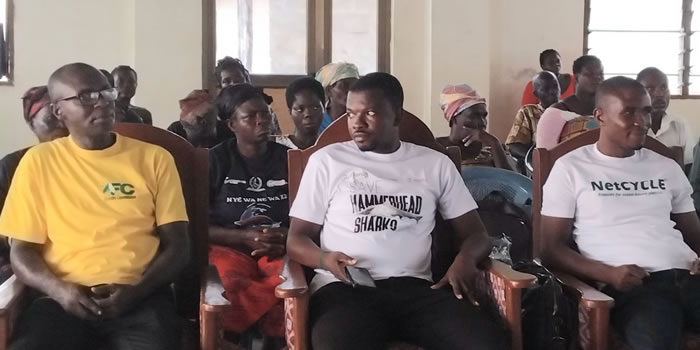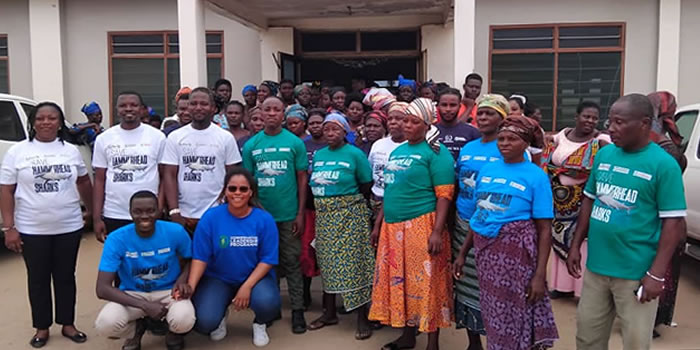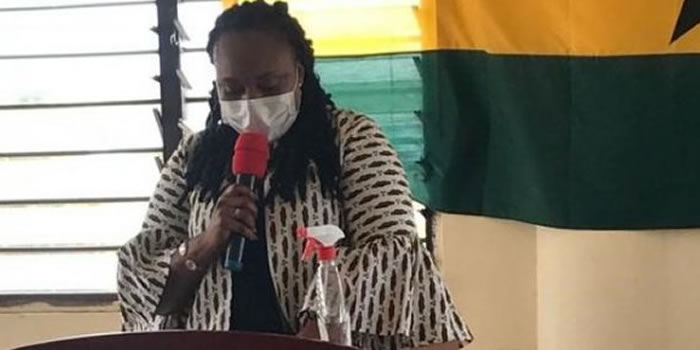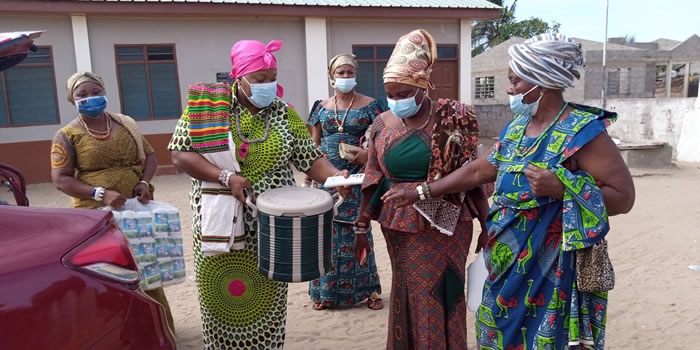

The infrastructure covered under this section includes roads, water transport, electricity, and water and post and telecommunications services.
Roads
The total length of the road network is about 172 km, made up of primary road (28km), secondary roads (20.2 km), and feeder roads (123.3km) The District has a fair distribution of road network with almost every settlement connection to a road. However much of the roads network, especially the feeder roads, are in very bad state with some becoming unmotorable during the rainy season. The roads linking songor lagoon area and Koluedor linking the northern part of the district are in bad condition.
Primary Road
The only primary road in the district is part of the Accra -Aflao road which is about 28km in length extending from kilometre 76 around Dawa to about kilometre 104 towards Sogakope. The condition of the road is made up of potholes, which need to be filled in order to prevent accident on the road.
Secondary Roads
The main secondary roads are from Kasseh (Ada Junction) to Ada-Foah (20km), Sege to Mepe (15km) and Sege to Lolonya (22km) The conditions of these roads are quite good.
Feeder Roads
Feeder (rural) roads form the largest proportion of the road network. These normally deteriorate after every rainy season. Feeder roads apart from Ada-Foah, Big Ada, Kasseh, Sege and Koluedor, which are joined, by primary or secondary roads connect almost all the settlements. Most of the roads are in poor state. They are untarred with potholes and some broken culverts ; There is considerable pressure on some of the feeder roads which makes it necessary to upgrade them to second class roads, especially the road from Koluedor to Segese which is very important for the transport of salt and the beach road from Ada Foah to fishing areas of Elavanyo, Pute and Totope.
Water Transport
The lower section of the Volta River provides a suitable water transport system along the south- eastern section of the District. The Ghana Highway Authority runs water transport services to link settlements along the lower Volta up to Akuse in Manya Krobo District. Private boats and canoes also operate alongside the launches.
The sea covering the whole of the southern section, and apart from providing fishing grounds is also used by fishermen to link up settlements along the coast. This can be developed together with the potential landing beaches into major water transport routes. The main problems associated with the water transport are:
- Delay associated with high number of stops by the launches.
- Inadequate safety measures on boats and canoes
- Lack of adequate landing facilities.
- Electricity
The District has been linked up to the national electricity grid. At present the Followingmajor communities have been connected to electricity under SHEP 1,2,3, Programme. About 28 communities have been earmarked for connection under the SHEP 4 programme.
Communities Connected with Electricity
- Ada Foah
- Big Ada
- Kasseh
- Addokope
- Tamatoku
- Sege
- Pute
- Totope
- Goi
- Anyamam
- Akplabanya
- Wokumagbe
- Matsekope
- Dogo
- Kajanya
- Ocanseykope
Post Office
There are two post offices located at Ada Foah and Big Ada and four postal agencies located at Tamatoku, Kasseh, Sege and Hwakpo. The main functions of these facilities are delivery of letters, to and from the district.
Telecommunications Services
Ada Foah and Big Ada have telecommunication facilities which depend on the Telecom Exchange at Ada Foah. Currently there are 228 telephone lines in the District with 10 telephone Booths, (6) located Ada Foah and (4) at Big Ada.
Private Communication Centres
LOCATION NUMBER
- Ada Foah 6
- Big Ada 4
- Kasseh 2
- Sege 1
- Anyamam 1
Total 14
It is necessary to expand these facilities to support socio-ecomonic activities in the District.
Location and Distribution of services
An examination of the nature of the distribution of services was made, by means of a Scalogram Analysis. A Scalogram is a matrix presentation of the functional structure of settlements. This technique enable the determination of the hierarchy of settlements in the district and hence the nature of spatial integration In all 31 services were considered from the various sectors of the district economy namely education, health, agriculture, commerce, communication etc.
The distribution of these services over the 27 major settlements, as well as the spatial location are shown in figure 10. The analysis revealed four levels of settlements within the district. The fourth order settlements offer the lowest services such as nursery and primary schools, streams and dugouts. Most of the settlements were found outside the functional region, which is an indication that they are cut-off from enjoying socio-economic services.
Hierarchy of Settlement
The settlements were ranked in a hierarchical order based on the variety and level of services. Clearly the analysis revealed a weak correlation between population and services distribution. For example, Akplabanya and Goi, which ranked fourth using population sizes, however ranked as level four settlement based on the level and variety of functions.
A further analysis of the Scalogram indicates that there are spatial imbalances in the distribution of services in the district. Services and facilities are concentrated at Ada Foah (District Capital). Of the 31 services listed, Ada Foah has 22 services. Kasseh follows Ada Foah with 19 services.
Commodity Flows
In this analysis, market surveys (Buyers and Sellers) ware conducted in the district for Two months to determine the extent of natural interaction between the market centres and their surrounding areas. The analysis helps in establishing a trade balance for the district in terms of Agricultural and Industrial goods.
The flow considers sellers and buyers of three market centres namely Kasseh, Ada Foah, and Sege. Both Exogenous and endogenous flows were classified under agricultural and industrial goods in the district and their economic values were measured in monetary terms.
The basic functions of these markets are retailing of agricultural produce (like fish, tomato, pepper, okro, garden eggs onion, cassava, water- melon) mainly produced from the district and manufactured items (Like clothing, hardware, cosmetics and provision) coming from Accra and Lome. It was observed from the study that in terms of both agriculture inflows and outflows Kasseh market emerged the most important market centre.
Exogenous Flows
The exogenous Flows refer to the exchange of goods between the district and the rest of districts within the country. In other words it is the goods moving beyond the boundaries of the district. These flows can be goods from external sources (exogenous Inflows or imports) and leaving the district to outside destination (exogenous outflows or exports)
Date Created : 11/16/2017 8:13:54 AM












 facebook
facebook
 twitter
twitter
 Youtube
Youtube
 +233 593 831 280
+233 593 831 280 0800 430 430
0800 430 430 GPS: GE-231-4383
GPS: GE-231-4383 info@ghanadistricts.com
info@ghanadistricts.com Box GP1044, Accra, Ghana
Box GP1044, Accra, Ghana